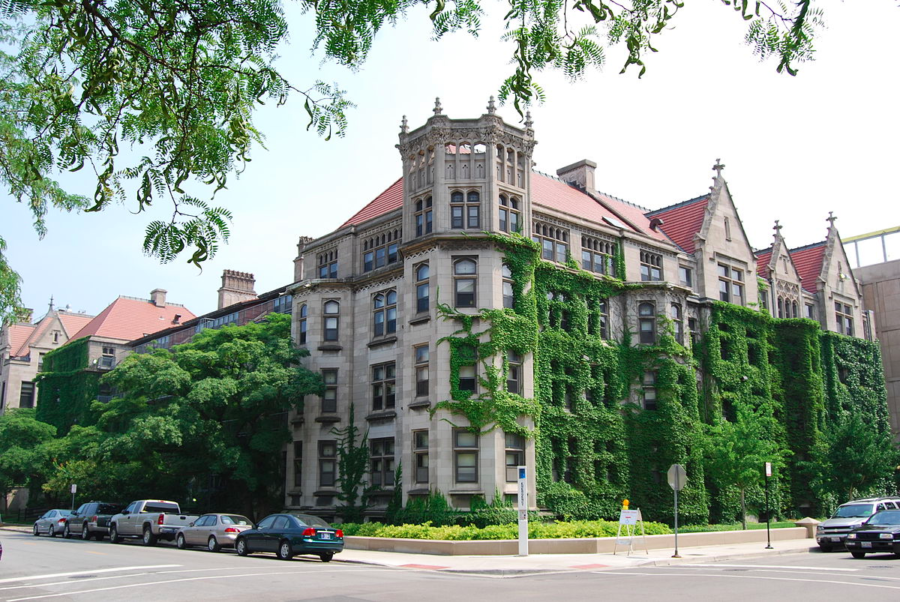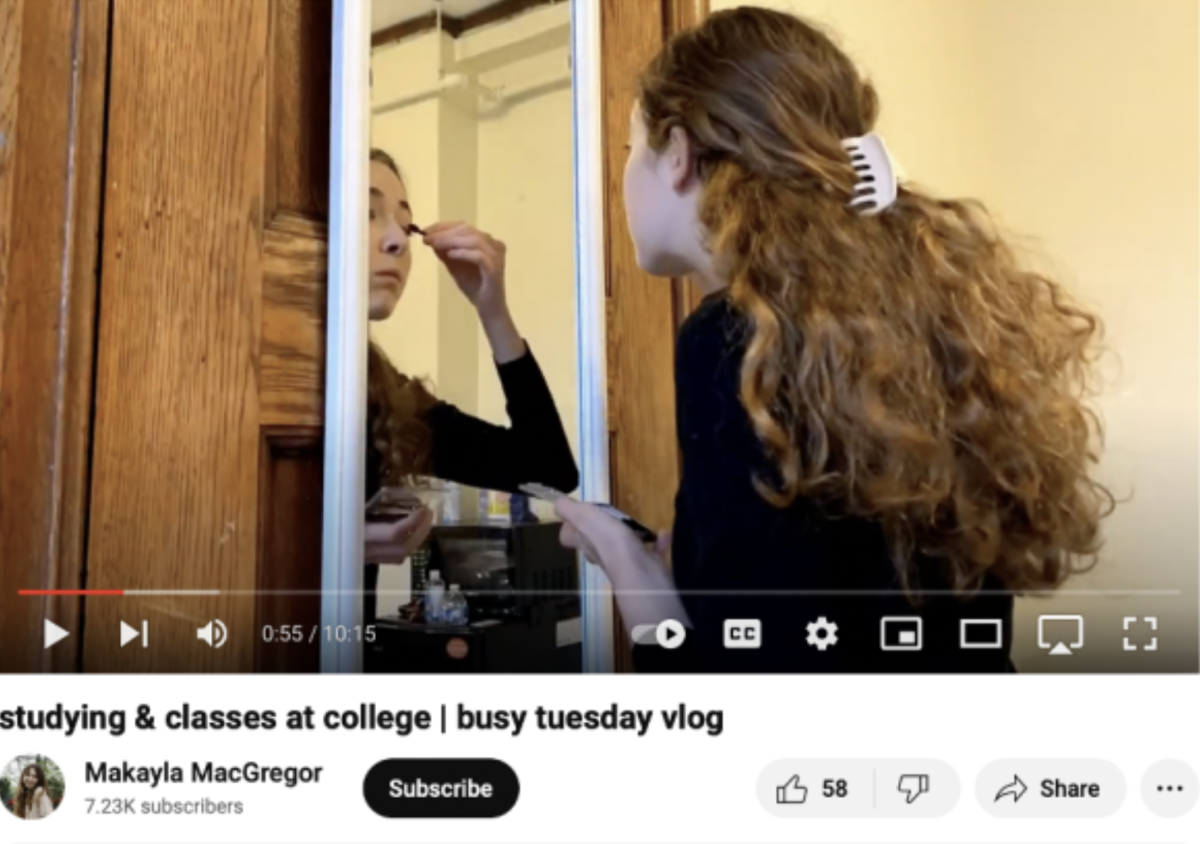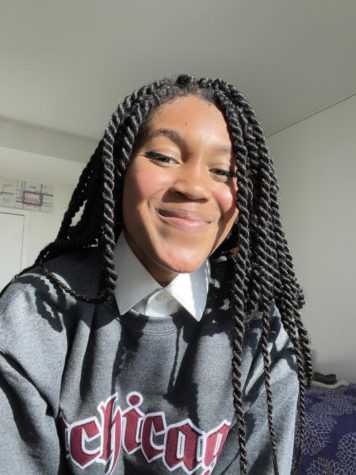As students returned to the University’s residence halls this past autumn quarter, the sounds of laughter, chatting, and the general hustle and bustle of college life resumed in most dorms. But Snell-Hitchcock, a dorm with one of the oldest, most colorful, and most interesting histories on campus, remained silent.
Snell-Hitchcock was shut down three weeks before the beginning of autumn quarter in response to the COVID-19 pandemic, and it is currently being used as isolation housing for students who test positive for the virus. Despite the absence of normally operating house culture, Snell-Hitchcock’s history is being kept alive. Its former residents came together and codified their traditions in a revived annual magazine called The Section Six, a collection of profiles, words from the dorm’s leadership, and jokes that encompasses the culture of Snell-Hitchcock.
Snell, the oldest continuously operating dorm on campus, was built in 1892 as a dorm for the University’s football team and was funded by donations from affluent Chicagoan Henrietta Snell. The money Snell had donated for the new dorm was from unclaimed reward money for the unsolved murder of her husband Amos Jerome Snell. The dorm’s first resident head was Amos Alonzo Stagg, a famous football coach who led the Chicago Maroons to seven Big Ten championships and became the namesake of UChicago’s Stagg Field.
Hitchcock was built in 1901 and opened in fall 1902, originally as a men’s dorm that housed primarily law and medical students. Hitchcock got its name from Charles Hitchcock, a prominent lawyer who lived in Hyde Park, who left the University money in his will to build the hall. Annie Hitchcock, Charles’s wife, also donated art for the hall and library and visited the dorm frequently. The building has also been included on the United States’ National Register of Historic Places since 1974.
Snell and Hitchcock, which students refer to jointly as “Snitchcock,” have a long history of winning Scav, a College-wide scavenger hunt that spans a few days in May. Snitchcock has claimed the championship title over 10 times since 1993, which dorm members attribute to its residents’ active participation in house culture. The team is also very organized, often beginning to plan around October for each Scav.
Snell and Hitchcock have many traditions they share together, such as a Snow BBQ on the first actual snow day of the year. Though not an actual tradition, many people in Snitchcock are involved in CMAC, which used to stand for Chicago Men’s A Cappella but is now just a low-voice a cappella choir no longer limited exclusively to men, and Hitchcock’s Pirate Choir. As a testament to their closeness, Snell and Hitchcock are the only two houses that share a table in the dining halls.
However, a recently revived tradition might be the most uniquely Snitchcock thing about the dorm, perfectly illustrating the vibrant culture of these houses. The Section Six was originally published more than 100 years ago as an annual of the happenings at Hitchcock. The publication’s name comes from the fact that Hitchcock is made up of five towers, labeled 1–5, so the annual is supposed to be the sixth “tower.” But when the COVID-19 pandemic hit, members of the dorms felt disconnected from their houses. Last year, more than a century after its initial publication, they decided to bring back The Section Six as both a physical record of the year and to bring a little piece of their dorm family to each other.
Third-year Kathryn Downey, managing editor of The Section Six, said that most of the planning and work for the annual was done toward the end of the year. As a managing editor, she coordinates the logistics of the annual—such as keeping up with who is writing which profile—so the other editors could keep track of the content going in the magazine.
“You had to recognize that you had an impact on the house, even if you didn't have to stand up at a house meeting and give a 10 minute speech every week, but you know the things you did and the presence you had mattered and people will notice,” Downey said.
The Section Six opens with a note from Dean of the College John Boyer, reflecting on the magazine’s commitment to enriching the house culture in Snitchcock as well as combining the dorm’s past and present traditions. Next, the resident deans, Larry and Penny Rothfield, add how The Section Six was made to memorialize all the happenings of the year.
This year’s magazine includes profiles and interviews of nearly every resident in Snitchcock, from the resident heads (RHs) and resident assistants (RAs) to the new first-years, along with various posters.
“I think my favorite part was just reading and editing profiles,” Downey said. “It's genuinely really fun to do. Because people put in a lot of work into them, and you know it's just always exciting to see what they do in the way people’s personality comes up for it. We saw that kind of creativity translate over to everybody's profiles.”
“It wasn't just…a normal yearbook summary. It was more about capturing what that person’s personality is and what makes them unique and exciting,” she said.
“The thing that makes the Hitchcock students special to me was their commitment to the bit,” said former Hitchcock resident head Joe Maurer, a humanities postdoctoral research fellow and former Ph.D. candidate in ethnomusicology. “They choose to do a lot of weird things, and there's a great diversity in the kinds of weird things they choose to do, but whatever it is, they fully commit to 110 percent.”
Sprinkled throughout are ads and posters commemorating the jokes in the house during the year, most notably Snitchcock’s war against Woodlawn Residential Commons. There are also lyrics to house songs like the “Battle Hymn of Section Two,” revived from an old inter-section war, and lyrics to a song in the house musical.
Downey explained that the posters, which are sprinkled throughout the annual, have wide-ranging purposes: A person in a particular section is starting a fake fight with someone from another section about how their section is better, or someone is advertising events they are doing.
“We took those posters and put them in Section Six because they're cool and exciting and [we] put a lot of work into them. Some of those fake advertisements were things that we made after the fact that were what we thought was a fun and exciting way to keep something that was mostly a verbal inside joke and translate it into something that still feels like an inside joke when you read it,” Downey said.
The first edition of the revived Section Six concludes with a letter by Hitchcock president and former Hitchcock admiral Roy McKenzie. In it, he touches on the struggles of the last academic year with the pandemic breaking apart this community, but he also remarks on how the pandemic has made the community stronger and appreciate one another more.
“Someday, the impact that each of us has had on the house will fade into the continuum of generations: our names forgotten, our traditions unexplainable, and the house as we knew it long gone. Despite this, I am proud to have laid my footsteps in these hallowed, harrowed halls, and each one of you should feel the same pride for taking part in a tradition which is much bigger than any of us,” McKenzie wrote.
Fourth-year Lillian Hermes, the president of Snell’s House Council, describes Snell as being more subdued and relaxed than Hitchcock. She says Snell doesn’t necessarily have concrete traditions like Hitchcock, but rather little quirks: For example, they take their important votes related to House matters in the dark. As president, she would officiate meetings, call out different house positions to report to others, and plan a house event every quarter, like a game night. Currently, Snell has meetings on Zoom every Tuesday, which Hermes described as “very, very unofficial.”
“To be a Snellian, you know I don’t need to run around and cause a ruckus at 10 p.m. [like Hitchcock]. I'm just going to sit here and do my thing. We know what we’re about and we’re going to be chill,” Hermes said.
Individually, Snellians enjoy relaxing in their Tea Room, which is the name of the house lounge, and eating Dat Donuts there in their pajamas on Undergraduate Break Day.
Conversely, Hitchcock has many traditions of its own that have changed over the years. For example, the dorm used to host small men’s parties known as “smokers.” Over the years, these small social gatherings turned into traditions like Midnight Tea where students would gather in a room and drink tea late at night with friends to relax. Less relaxing, however, is Hitchcock’s tradition of “ponding”—throwing people into Botany Pond—which is regarded as a high honor. Usual people who are thrown in are RAs, RHs, House Presidents, Scav captains, and Scav first-year representatives. Every house has house meetings that bring house members together, yet Hitchcock’s frequently last over an hour.
“I think Hitchcock is a space for people to realize that they actually are extroverts and meet people that they find so interesting and fun. What makes Hitchcock Hitchcock is just the absolute love of community that permeates the whole experience,” said fourth-year Anna Whitney, president of Hitchcock’s House Council.
Like Hermes, Whitney hosts weekly house meetings on Zoom in an attempt to keep the Hitchcock community happy and tight-knit. Though she is grateful she gets to continue holding house meetings, she is also frustrated with not only the late notice given for Hitchcock’s closure, but also with how housing assignments this year have negatively affected current first-years and possibly later classes.
“Randomizing housing assignments eliminates the ability for students to choose what culture they want to enter dorm-wise when they're entering the university. It makes it harder for people to feel a kinship with younger and older students. It just doesn't seem like a wise choice on the part of the University. It seems like it will only cause them more trouble when it comes to moving people around later,” Whitney added.
What’s more, the dorm’s remote meetings do not compare to physically being together.
“Being online does not compare at all to being together in real life. I think that what makes a community its strongest is the little experiences of living together day to day. I really miss just seeing people in the rec room,” she said.
Hitchcock, in its quintessentially patriotic fashion, is the only dorm with a navy. In a ceremony at the beginning of every academic year, every Hitchcockizen soberly pledges their soul to their elected admiral, a house council position, and the admiral makes conquests in the name of Hitchcock. The admiral “walks the plank” into Botany Pond at the end of their term. Last year, the Navy was led by “Admiral” Gabe Sanchez, who began a siege on Woodlawn Residential Commons by eating dinner at Arley D. Cathey Dining Commons together with the Breckinridge Army. The Navy, Army, and Snell’s Air Force then approached Woodlawn on foot and laid siege to the then-uncompleted dorm by chanting at it. Sanchez mentioned how he requested help from both the Snell Air Force and the Breckinridge Army. The Navy’s previous conquests include North, Northwestern, the State of Nebraska, and Albuquerque.
“It's quite telling when a bunch of people just wake up at 8 a.m. to go to Northwestern and fool around and pretend to be conquering Northwestern for the sake of Hitchcock,” Sanchez said.
Another unique tradition in Snitchcock is the house musical, both written and directed by its house bard, a recently created position in Snitchcock. Residents put on the house musical around the fourth week of winter quarter as a way for people in house positions to show off their talents on the stage in order to entice their dormmates to vote for them in elections a few weeks later. Last year's musical, entitled Tommy and the Dorm, was about a Snellian who is conflicted about possibly moving to Woodlawn. The musical’s opening song, called “Snelle” and sung to the tune of “Belle” from Beauty and the Beast, was a hit among Snitchcockizens.
Maurer tried to implement his own traditions during his RH tenure. For example, he tried to do a lot more cooking tutorials with house members. Hitchcock would have house meal nights where they voted on what they wanted to cook, and Maurer would buy the ingredients. He said he tried to tone down the rivalry between Snell and Hitchcock to make it more amicable and friendly.
“It's very much about finding the appropriate balancing point between reining in students when they might be doing things that are a little too ill-advised, but also encouraging them to do things like having giant snow sculptures or making blanket forts in the lounge. Being an RH, it was fun to be invited into this pre-existing community and try to play a leadership role that balanced bringing in new things while ensuring that the old things continued,” Maurer said.
While the house culture of Snitchcock is largely dormant now, the building is no less rich with historical symmetries; the dorm currently houses students who have tested positive for COVID-19, just as a student with scarlet fever was quarantined in Room 69 a century ago to avoid infecting others. But above all else, to the dorm’s devoted residents, the pandemic has demonstrated the beauty and resilience of Snitchcock’s house culture.
“The last little room dorm party was toga themed…. No one knew it was the last one when it was happening, but it was the last,” Hermes said. “I remember being in the room and I felt comfortable with every single person in that room, and just could laugh with every single person in that room. It was a really good feeling. I think that’s really just what makes Snitchcock a special place.”









